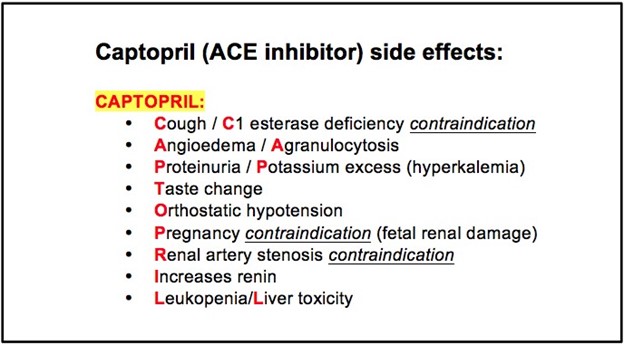A nurse is assisting in the care of an older adult client who has COPD and is receiving albuterol treatments and 20 mg of prednisone twice daily. The client asks why the nurse is checking his blood glucose level.
Which of the following responses should the nurse make?
Older adults are at risk for developing type 1 diabetes mellitus.
Prednisone can cause blood glucose levels to increase.
Albuterol treatments can cause blood glucose levels to decrease.
Having COPD causes blood glucose levels to fluctuate.
The Correct Answer is B
Prednisone can cause blood glucose levels to increase.
The nurse should explain to the client that the reason for checking his blood glucose level is because prednisone, a medication he is receiving, can cause an increase in blood glucose levels. Prednisone is a corticosteroid medication that is commonly used in the treatment of various conditions, including COPD. It has the potential to raise blood glucose levels by promoting gluconeogenesis (the production of glucose from non-carbohydrate sources) and decreasing insulin sensitivity. Monitoring blood glucose levels is important to assess and manage any potential hyperglycaemia or changes in the client's blood sugar levels while on prednisone.
Older adults are not at increased risk for developing type 1 diabetes mellitus in (option A) is incorrect. Type 1 diabetes is an autoimmune condition that typically occurs in childhood or adolescence, and it is characterized by the destruction of insulin-producing cells in the pancreas.
Albuterol treatments, which are used to relieve bronchospasms in clients with COPD, are not known to cause blood glucose levels to decrease in (option C) is incorrect. Albuterol is a beta-2 adrenergic agonist that primarily acts on the respiratory system and does not have a direct effect on blood glucose levels.
Having COPD does not directly cause blood glucose levels to fluctuate in (option D) is incorrect. While there can be various factors that may indirectly affect blood glucose levels in individuals with COPD (e.g., medications, stress, comorbidities), the primary reason for monitoring blood glucose in this case is the use of prednisone.
In summary, the nurse should explain to the client that the blood glucose levels are being checked because prednisone, a medication he is taking for his COPD, can cause an increase in blood glucose levels. This allows for appropriate monitoring and management of any potential hyperglycemia associated with the use of prednisone.
Nursing Test Bank
Naxlex Comprehensive Predictor Exams
Related Questions
Correct Answer is C
Explanation
Dependent personality disorder is characterized by an excessive reliance on others for decision-making and a fear of being alone or taking responsibility. Encouraging the client to be assertive helps promote their independence and self-confidence. It allows them to express their needs and preferences, make decisions, and take responsibility for their own actions. Empowering the client to be assertive can enhance their overall well-being and promote healthier relationships.
Limiting the client's social interactions may exacerbate their dependency and hinder their progress in developing more self-reliance and independent coping skills. It is important to encourage appropriate and healthy social interactions while also promoting the client's independence.
Maintaining a verbal no-harm contract with the client is a strategy more commonly used for clients at risk of self-harm or harm to others. It may not be directly applicable to the care of a client with dependent personality disorder unless there are specific safety concerns. Assuming responsibility for making the client's decisions would reinforce their dependency and enable their avoidance of taking personal responsibility. It is important to promote autonomy and support the client in making their own decisions whenever possible.

Correct Answer is C
Explanation
Orthostatic hypotension, which is a sudden drop in blood pressure upon standing, can be a side effect of enalapril and may lead to syncope. Instructing the client to rise slowly from a sitting to a standing position helps minimize the risk of a sudden drop in blood pressure and decreases the chances of syncope occurring.
Decreasing fluid intake is not likely to be the cause of syncope related to enalapril. It is important for clients to maintain adequate hydration, especially if they are experiencing side effects such as orthostatic hypotension.
While a low pulse rate may indicate bradycardia, it is not the primary concern in this situation. Orthostatic hypotension leading to syncope is the main issue, and the client should be instructed to rise slowly to prevent it.
While enalapril is an angiotensin-converting enzyme (ACE) inhibitor that can increase potassium levels in the blood, it is not directly related to syncope. Dietary changes should be made under the guidance of a healthcare provider based on individual needs and blood test results.

Whether you are a student looking to ace your exams or a practicing nurse seeking to enhance your expertise , our nursing education contents will empower you with the confidence and competence to make a difference in the lives of patients and become a respected leader in the healthcare field.
Visit Naxlex, invest in your future and unlock endless possibilities with our unparalleled nursing education contents today
Report Wrong Answer on the Current Question
Do you disagree with the answer? If yes, what is your expected answer? Explain.
Kindly be descriptive with the issue you are facing.
